-
 829 Hits
829 Hits
-
 80.49% Score
80.49% Score
-
 12 Votes
12 Votes
|
|
Mountain/Rock |
|---|---|
|
|
39.72414°N / 21.61445°E |
|
|
Trad Climbing, Sport Climbing |
|
|
Spring, Fall |
|
|
1640 ft / 500 m |
|
|
Overview
Geierwand / Vulture Wall
Geierwand is a well known rock climbing destination in the Meteora (Μετέωρα) area, a charming and suggestive climbing site located in the Thessaly region of Greece. It's a stately tower with walls about 150 meters high, located in the Western group and featuring an imposing triangular rock face. Sitting across the valley from Doupianifels, Geierwand is situated right in front of the imposing walls of Kastrakiturm and Orgelpfeifenwand.

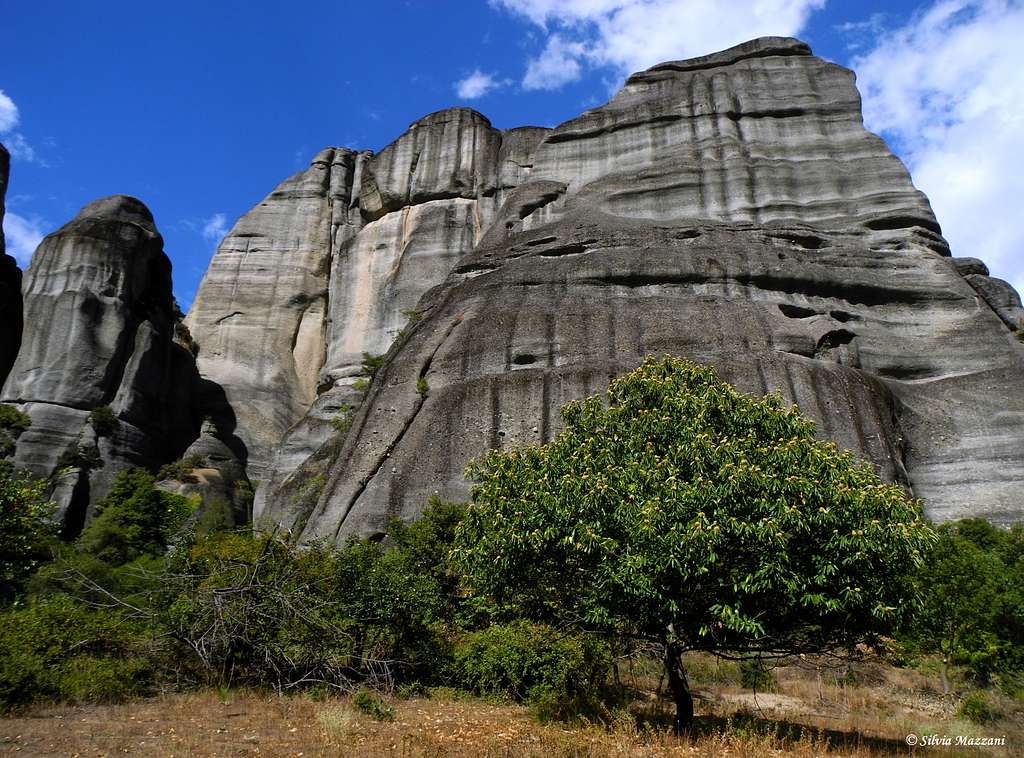
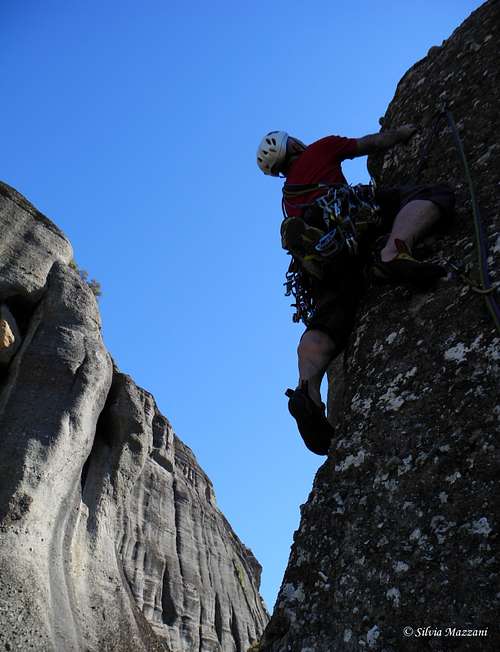
Geierwand (German name) means Vulture Wall. It is well known that the developement of Meteora was done mainly by East Germany climbers. The 2 guidebooks that include the most of the routes (except some new ones) were created by D. Hasse and H.L. Stutte, mainly in German language, with some Greek and English also. So all the rock formation in Meteora have two names, the original Greek one plus the German one created by the first climbers. In recent times the English name is frequently used. It is the translation of the first two names and is more convenient for the climbers who doesn't speak German or Greek.
On Geierwand there are half a dozen climbing routes, among these the super classic and most often climbed is the Westkante (West ridge), a classic route of high aesthetics.
Getting There
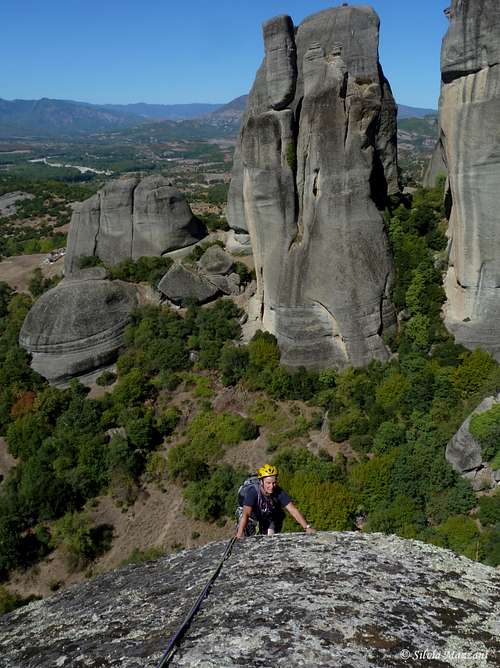
Meteora is situated in the Thessaly region of Greece, Northern half of Greece, approximately 25 km NNW from Trikala, and immediately North of Kalambaka and Kastraki, the two main towns in the area, both located very close to the rocks. The closest main town is Larissa. The distance to Kalambaka is about 360 km from Athens and 237 km. from Thessaloníki.
By plane - Meteora can be approached from Athens Eleftherios Venizelos airport or from Thessaloniki airport. From these airports you can:
- take a domestic flight to Larissa (about 85 km from Kalambaka)
- rent a car, useful once you are in Kastraki, but not essential, then 4 hour drive to Kalambaka on a new highway.
- use public transports (bus or train). Getting to Meteora without a car is easy thanks to the train from Athens that stops in Kalambaka.
By ferry from Italy – If you wish to travel with your own car, there are different shipping companies and many ferries departures to Igoumenitza from the harbours of Ancona, Bari and Brindisi across the Adriatic.Then a mountain road to the small town of Kalambaka at the foot of the wonderful Meteora.
Approach to Geierwand
The approach is brief and easy. Once in Kastraki village you can walk from the square to the West Group and the Geierwand in about 15-20 minutes, or you can park your car near the Doupiani Rock, just on the left of the main road leading to the Meteoron monastery along the road. it is located on the opposite side of the valley from the Doupiani. Once reached the base of the south side of Geierwand, walk left skirting the tower to the left in the direction of the West ridge to get the starting point of of the majority of the routes.
Routes
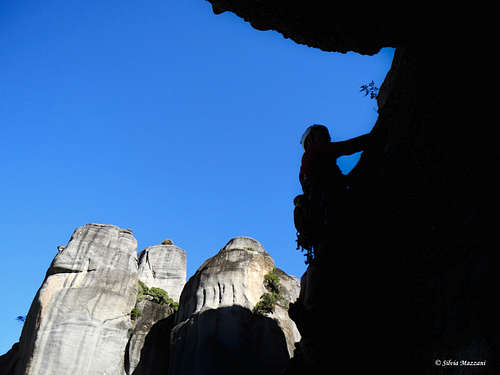
- Nordwest verschneidung V, 100 m., 3 pitches - D. Hasse, H.L. Stutte 1976
- Westkante (West ridge) VI (A1), 140 m, 5 pitches - D. Hasse, S. Konig 1984 L1 4 25m trad, L2 5b 45m trad, L3 5c+ 30m sport, L4 6a 20m sport, L5 4b 20m
This route is the classic climb of Geierwand and the more frequently climbed. Start up from a small terrace, go up in the direction of the small cave and crack above.
- Grosse Talseitenvariante zur Weskante VII-, 60 m, 2 pitches - D. Semiginovsky, S. Silhàn 1987 - Low variant of West ridge
- Bröselige Pfeilervariante zur Westkante VI-, 45 m, 1 pitch - J. Sommer, A. Weigert 1996
- Aufschwung VI+, A0, 140 m, 4 pitches - A. Hausotter, H. Weninger, B. Wischhofer 1984
- Tanz der 1000 Teufelchen (Dance of the 1000 little devils) VIII+/IX-, 60 m, 2 pitches - J. Sommer, A. Weigert 1996
Descent
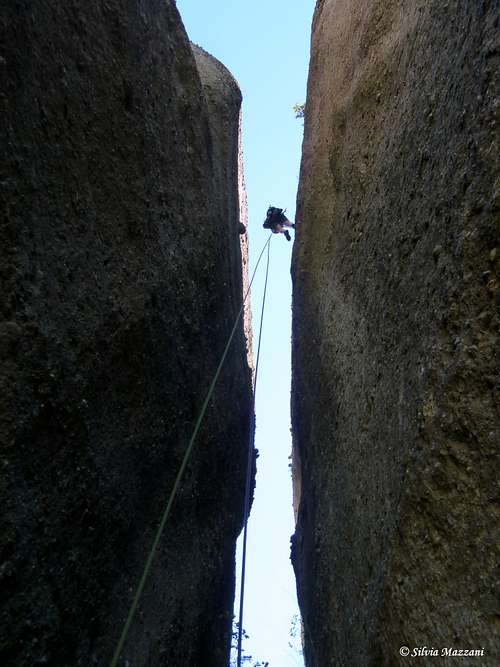
The descent from the airy summit of Geierwand is done by means of 2 abseils down a wide split (25 + 40 m)
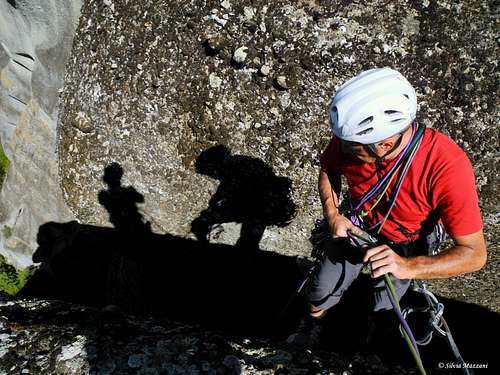
Red Tape
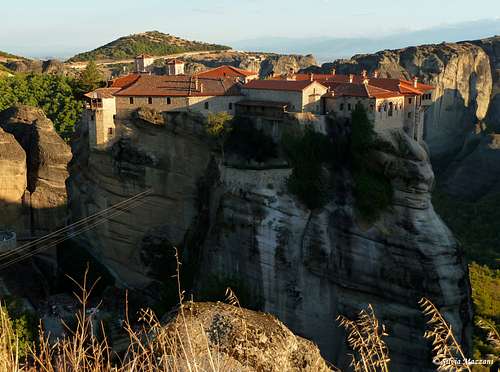
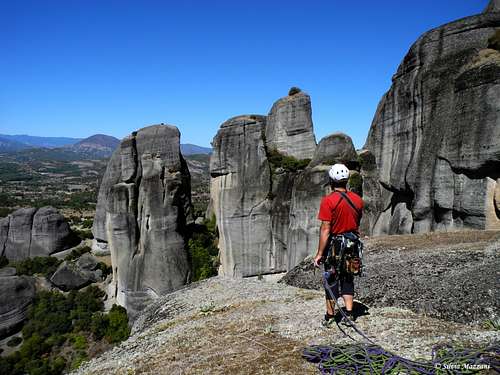
No fees and no permits required. Anyhow, if you are visiting this area, remember not to climb on rock formations with inhabited monasteries. In the Seventies Dietrich Hasse and his team decided, in agreement with local authorities, not to climb any route on these latter rock formations. This rule applies even today. Please preserve all other historical remains. Another important suggestion is not to add fixed protections on the classic routes to the pre-existing ones. If you plan to visit the monasteries, keep in mind to be appropriately dressed: men cannot wear shorts, while women must wear long skirts and not trousers, arms must be covered. Since the year 1988 Meteora was declared a Meteora Unesco World Heritage Site .
When to Climb
Spring and Autumn are the best seasons for Meteora. Virtually you could climb all year round (snowfalls are rare), with the warning that summer is really very hot and in winter the temperatures may be unpleasant, unless you are very lucky. The best months are late March, April, May, September, October and November.
Accomodation
There is a great number of hotel rooms, B&Bs and rooms to rent in the village of Kastraki, the village built in the shadow of the Meteora towers. The nearby town of Kalabaka also features many accomodation choices. There are also three organized campsites, amongst which the nearest one to the crags is Camping Vrachos in Kastraki. There is also a smaller campsite near the tower of Doupiani. There are plenty of eating out options, particularly tasty traditional Greek food and pizzerias, both in Kastraki and Kalambaka.
Meteo
Guidebooks

“Meteora – Climbing and hiking” by Dietrich Hasse and Heinz Lothar Stutte - I edition 1986, in English and German. It contains around 230 routes. Also, it provides general information about mountaineering, hiking in Meteora, maps, directions.
The second guidebook is:

“Meteora Climbing Part II” by the same Heinz Lothar Stutte and Dietrich Hasse – II edition 2000 – German, Greek and English - Note: the II edition is not a complete guidebook, but an update to the I edition
The Meteora guidebooks can be purchased in Kastraki, Taverna Paradisos or Camping Vrachos. There is also a useful map by the same authors that can be purchased in local shops in Kastraki.
Map
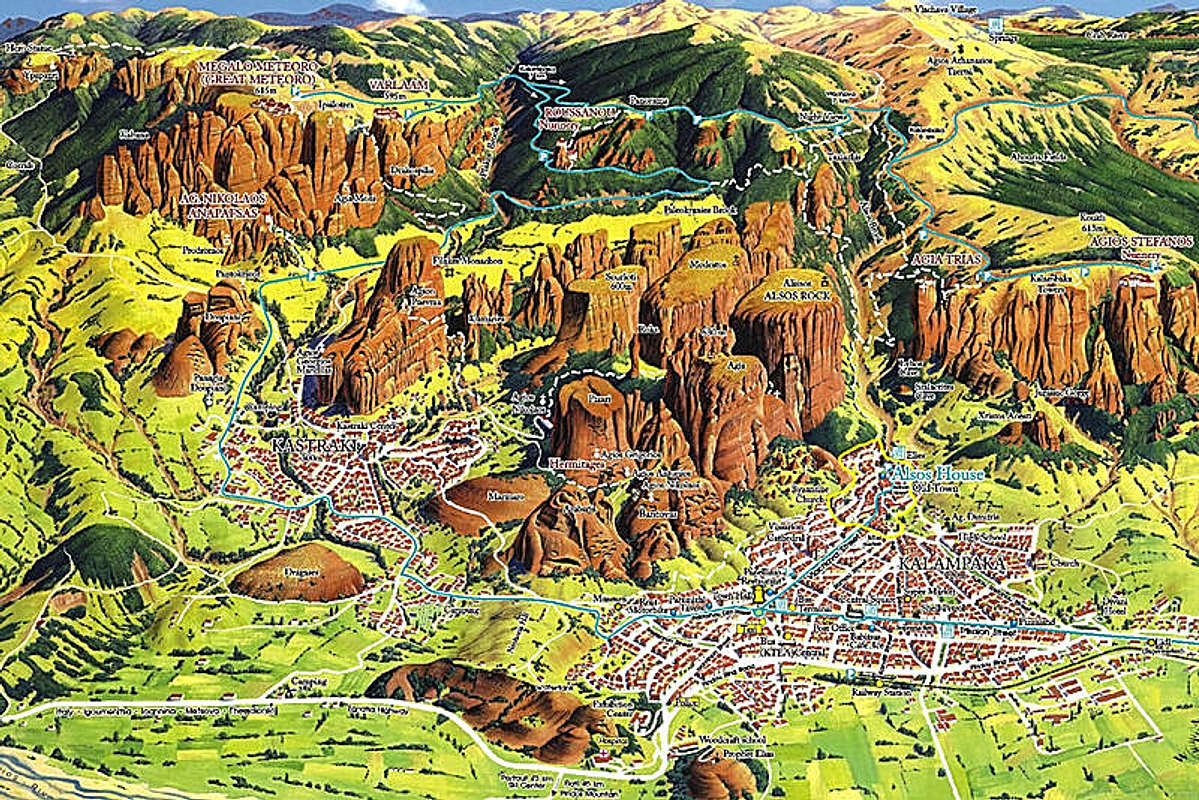
External links
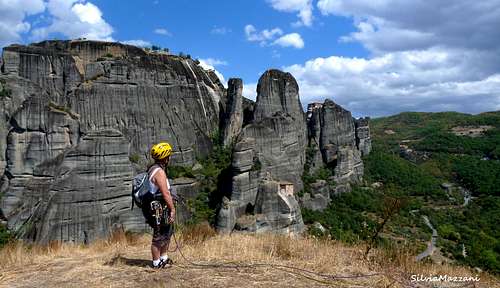
Climbing web-sites:
- Climbgreece
- Climb-Europe Greece/Meteora
- Meteora-rock-climbing
The site of Jörg Brutscher, one of the German climbers, who first climbed many hard cracks in Meteora. Unfortunatelly his site is only in german.
Also by Jörg Brutscher, check : www.sandsteinklettern.de. In german only, but with a lot of information. Click on Wegedatenbank, then Griechenland. There are a lot of routes and very good drawings/maps of the various rock groups. Some very interesting climbing photos from Meteora, Elb and other places.
The site www.routes.gr is the best database of mountain climbing routes in Greece. Unfortunatelly has only a few, mainly new, routes from Meteora in this link: www.routes.gr/?Lang=en&Page=Climbing/Trad/Areas/Meteora
Other info here:
The site of Kalambaka town: www.kalampaka.com
The site of the Hellenic Mountain Guide Association.

